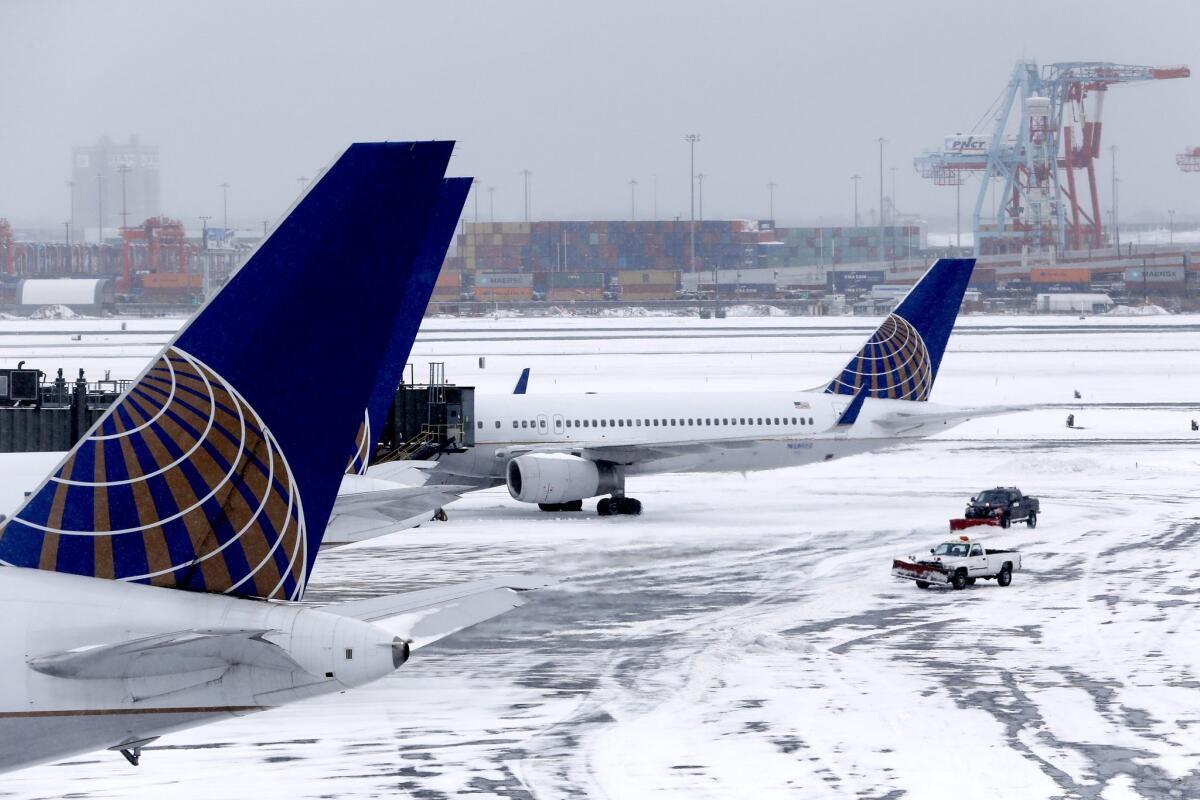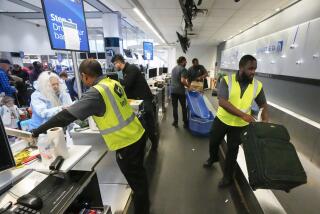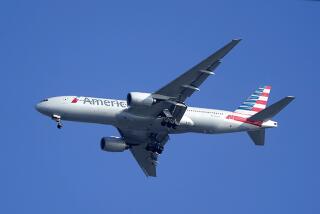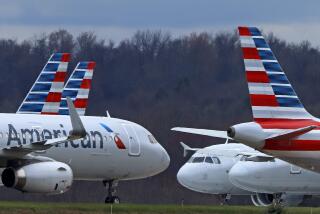Airline tarmac rule leads to more passenger delays, study concludes

Trucks pushing plows clean up the tarmac area as United Airlines planes board at Newark Liberty International Airport following an overnight snowstorm, which forced the cancellation of most flights in and out of the airport, Tuesday, Jan. 27, 2015, in Newark, N.J. A university study says a rule that fines airlines for stranding passengers on the tarmac leads to more delays.
- Share via
One of the nation’s toughest passenger rights laws — a rule that fines airlines for stranding fliers on an airport tarmac — may actually increase passenger delays instead of reducing them.
That is the conclusion of a new study by professors from Dartmouth College and the Massachusetts Institute of Technology. The good news, according to the study, is that the 2010 law can be modified to reduce passenger delays.
The focus of the study is the so-called tarmac delay rule, which gives the U.S. Department of Transportation the authority to fine airlines up to $27,500 for each passenger on a domestic flight who is stranded on an airport tarmac for more than three hours. The time limit is increased to four hours for international flights.
The rule was adopted after blizzards on the East Coast in 2006 and 2007 left passengers stranded on planes for up to 11 hours.
But the new peer-reviewed study, which used algorithms to analyze airline flight data, concludes that airlines are now more likely to cancel flights that are delayed to avoid being fined by the Department of Transportation, thus creating more passenger delays.
For every minute the rule saves passengers from being stuck on a tarmac, passengers are delayed three minutes on average because they have to book new flights to get to their final destinations after their original flights are canceled, according to the study.
“There is no surprise that sometimes when you try to do something good you have these negative effects,” said Vikrant Vaze, a co-author of the study and an assistant professor at Dartmouth’s Thayer School of Engineering.
Previous studies have concluded that flight cancellations are more likely because of the tarmac rule but the Dartmouth-MIT study says it is the first study to analyze the actual impact on passengers.
The study concluded that passenger delays can be reduced if the tarmac rule is modified to increase the tarmac time limit to three-and-a-half hours and if the law applies only to flights scheduled to depart before 5 p.m., when passengers have more options to rebook.
Kate Hanni, a passenger-rights advocate who helped push for adoption of the tarmac rule, rejects the findings of the Dartmouth-MIT study, saying she believes the universities are biased and accept funding from airlines.
She blame the passenger delays on airlines that schedule more flights per day than can be accommodated by the airports.
Vaze said the study was funded by a research branch of Federal Aviation Administration and “was not funded in any part by any airline, major or otherwise.”
To read more about travel, tourism and the airline industry, follow me on Twitter at @hugomartin.
More to Read
Inside the business of entertainment
The Wide Shot brings you news, analysis and insights on everything from streaming wars to production — and what it all means for the future.
You may occasionally receive promotional content from the Los Angeles Times.











